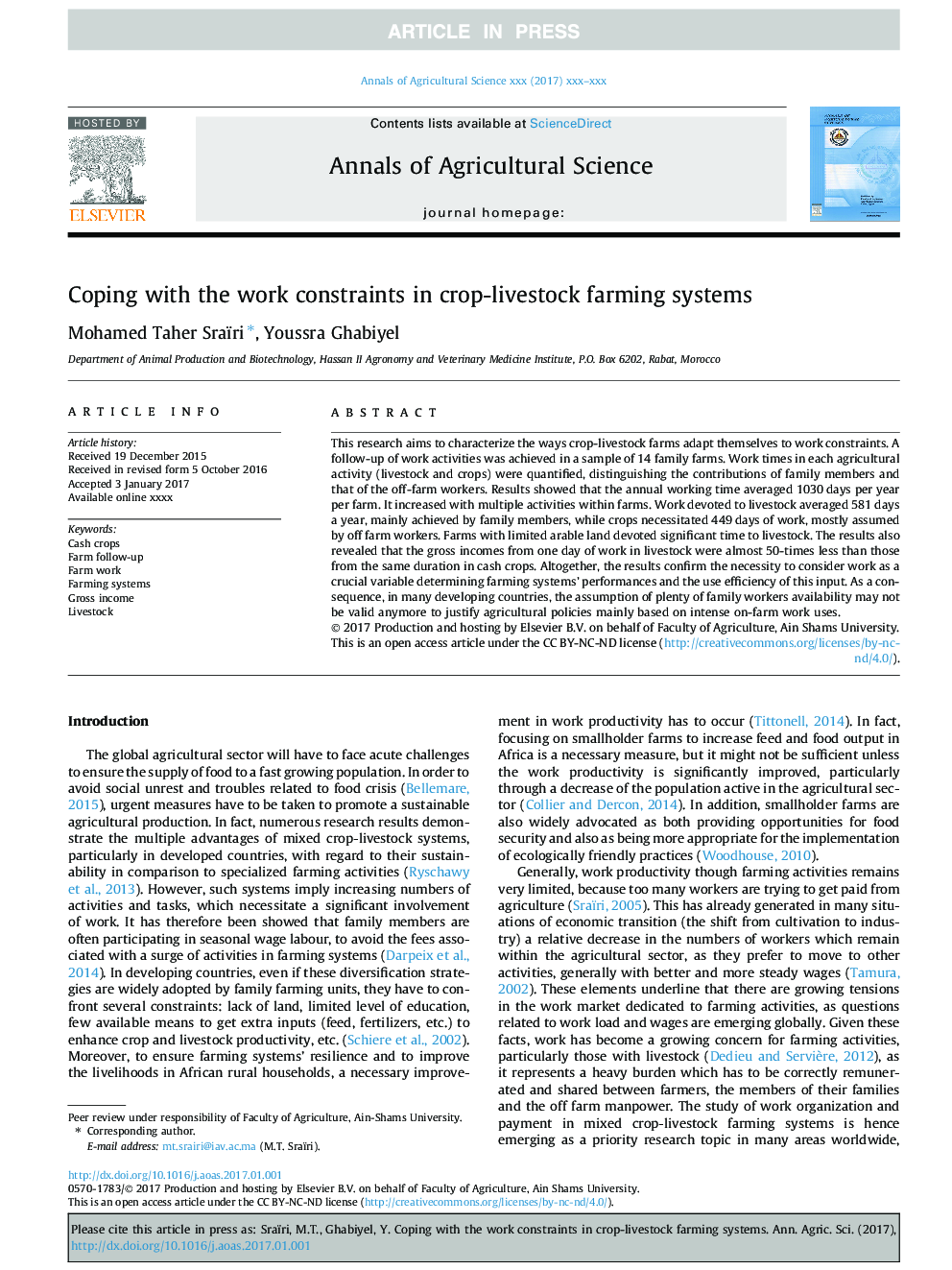| Article ID | Journal | Published Year | Pages | File Type |
|---|---|---|---|---|
| 8875158 | Annals of Agricultural Sciences | 2017 | 10 Pages |
Abstract
This research aims to characterize the ways crop-livestock farms adapt themselves to work constraints. A follow-up of work activities was achieved in a sample of 14 family farms. Work times in each agricultural activity (livestock and crops) were quantified, distinguishing the contributions of family members and that of the off-farm workers. Results showed that the annual working time averaged 1030Â days per year per farm. It increased with multiple activities within farms. Work devoted to livestock averaged 581Â days a year, mainly achieved by family members, while crops necessitated 449Â days of work, mostly assumed by off farm workers. Farms with limited arable land devoted significant time to livestock. The results also revealed that the gross incomes from one day of work in livestock were almost 50-times less than those from the same duration in cash crops. Altogether, the results confirm the necessity to consider work as a crucial variable determining farming systems' performances and the use efficiency of this input. As a consequence, in many developing countries, the assumption of plenty of family workers availability may not be valid anymore to justify agricultural policies mainly based on intense on-farm work uses.
Keywords
Related Topics
Life Sciences
Agricultural and Biological Sciences
Agricultural and Biological Sciences (General)
Authors
Mohamed Taher Sraïri, Youssra Ghabiyel,
